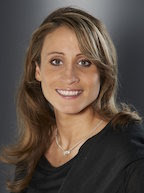855
 For this month’s Researcher of the Month, we spoke to Dr. Sonja Schrepfer, Professor of Surgery, at Division of Adult Cardiothoracic Surgery, University of California San Francisco (UCSF). Dr. Sonja is also the Director at TSI Lab at UCSF, which focuses on methods for preventing immunological rejection of tissue in heart and lung transplant.
For this month’s Researcher of the Month, we spoke to Dr. Sonja Schrepfer, Professor of Surgery, at Division of Adult Cardiothoracic Surgery, University of California San Francisco (UCSF). Dr. Sonja is also the Director at TSI Lab at UCSF, which focuses on methods for preventing immunological rejection of tissue in heart and lung transplant.
 For this month’s Researcher of the Month, we spoke to Dr. Sonja Schrepfer, Professor of Surgery, at Division of Adult Cardiothoracic Surgery, University of California San Francisco (UCSF). Dr. Sonja is also the Director at TSI Lab at UCSF, which focuses on methods for preventing immunological rejection of tissue in heart and lung transplant.
For this month’s Researcher of the Month, we spoke to Dr. Sonja Schrepfer, Professor of Surgery, at Division of Adult Cardiothoracic Surgery, University of California San Francisco (UCSF). Dr. Sonja is also the Director at TSI Lab at UCSF, which focuses on methods for preventing immunological rejection of tissue in heart and lung transplant.
Dr. Sonja’s recent publication in Nature Biotechnology, tells us about recent advancements made by her lab in generating derivatives from stem cells that avoid immunorejection in healthy recipients.
CTS : For the benefit of our readers, could you please explain in brief what your team has achieved in this publication?
Dr. Sonja Schrepfer (SS): Our team used CRISPR to create the first pluripotent stem cells that are functionally “invisible” to the immune system, a feat of biological engineering that prevents rejection of stem cell transplants and brings the promise of regenerative medicine a step closer to becoming reality. The immune system is unforgiving — it’s programmed to eradicate anything it perceives as alien. This protects the body against infectious agents and other invaders that could wreak havoc if given free rein, but it also means that an organ or tissue transplant is interpreted as a potentially dangerous foreign incursion, which invariably provokes a vigorous immune response that leads to transplant rejection. In our paper, we describe how, by altering the activity of just three genes in pluripotent stem cells, these triple-engineered stem cells are able to avoid rejection after being transplanted into histocompatibility-mismatched recipients with fully functional immune systems.
CTS: What kind of cardiac patients would be benefited with such a treatment option, that might be available in the future?
SS: All patients where cells or tissue have to be replaced.
CTS: How did you arrive at the idea of hypoimmunogenic pluripotent stems cells for cell grafts?
SS: By learning from Nature: We studied for many years fetomaternal tolerance. The fetus during pregnancy is not rejected by the mother’s immune system, although half of the fetal’s proteins are from the father. We studied single molecules to achieve fetomaternal tolerance and identified the combination of the fewest number of modifications needed to achieve hypo-immunogenecity.
CTS: Going forward would you to be looking at injecting differentiated cells or stem cells?
SS: It is important to note, that pluripotent stem cells (such as induced pluripotent stem cells or so called “iPSCs”) cannot be injected into patients. Since they are pluripotent, they would form teratomas. Therefore, only differentiated cells can be used for injection.
CTS: How does your team plan to take this research further?
SS: Our technique can benefit a wider range of people with production costs that are far lower than any individualized approach and we only need to manufacture our cells one time and we’re left with a product that can be applied universally.
CTS: International Women’s Day is celebrated in March every year but women’s participation in science is still low. What steps would you suggest for increasing women’s participation in science?
SS: We need to encourage and support girls and women achieve their full potential as scientific researchers and innovators. Mentors and roles models can have a positive impact on female scientists and on girls who want to step in the scientific career. This is also very important in society and modern culture where stereotypes are still present. Along good mentors, support of family and friends is essential.
CTS: What would be your advice to a budding researcher?
SS: Choose the field you are excited about – motivation keeps you going although in times when experiments are failing or hypothesis have to be re-considered. Be a truth-seeker and don’t stop to ask questions that bring you closer to a solution. Usually each answer after an experiment opens 10 new questions.


